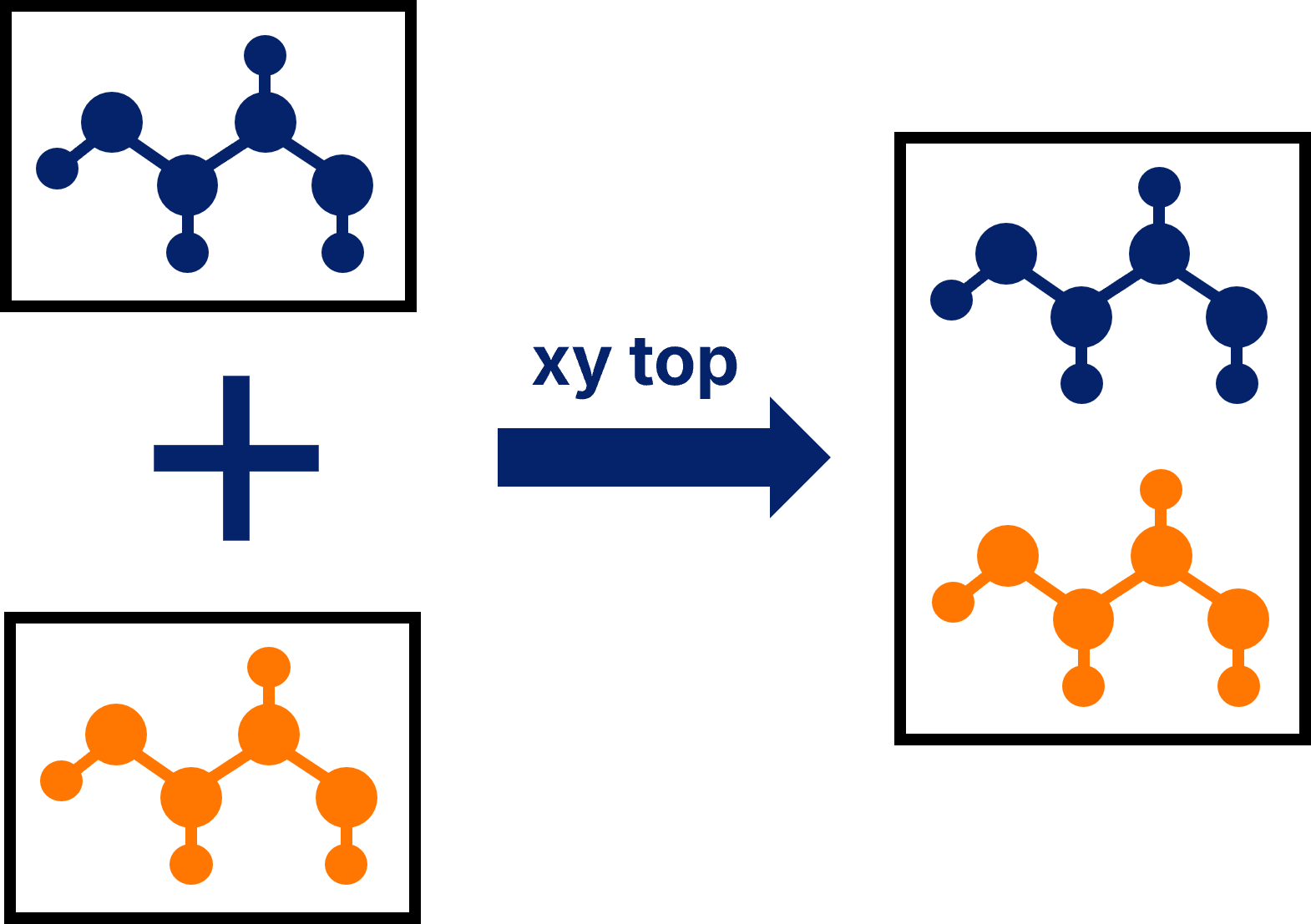Join systems
Description
This function joins two systems by one of their sides, as specified by the Sides to join input. The following conventions are applied:
-
In the direction perpendicular to the selected
Sides to join, the two systems are separated by a distance defined by theBuffer between systemsinput. -
In the other two directions, the geometric center of the second system is aligned with the midpoint of the first system. The midpoint is calculated as the average of the maximum and minimum coordinates.
-
The first system is always shifted so that its minimum coordinates in every direction are at 0.
No checks are made on atom proximity. If the original systems have atoms outside the cell, they might overlap with atoms from the other system. It is the user’s responsibility to ensure that no overlaps occur.

Latest version
Allowed number of parents: 2
-
Parent system
-
System to be joint
| Parameter | Description | Value type | Value restrictions | Default value | Units |
|---|---|---|---|---|---|
Sides to join |
The sides by which the two systems shall be joined together |
selector |
“xy top”, “xy bottom”, “xz right”, “xz left”, “yz front”, “yz back” |
xy top |
N/A |
Buffer between systems |
The buffer that shall be added between the two systems |
float |
≥0 |
0.0 |
Angstrom |